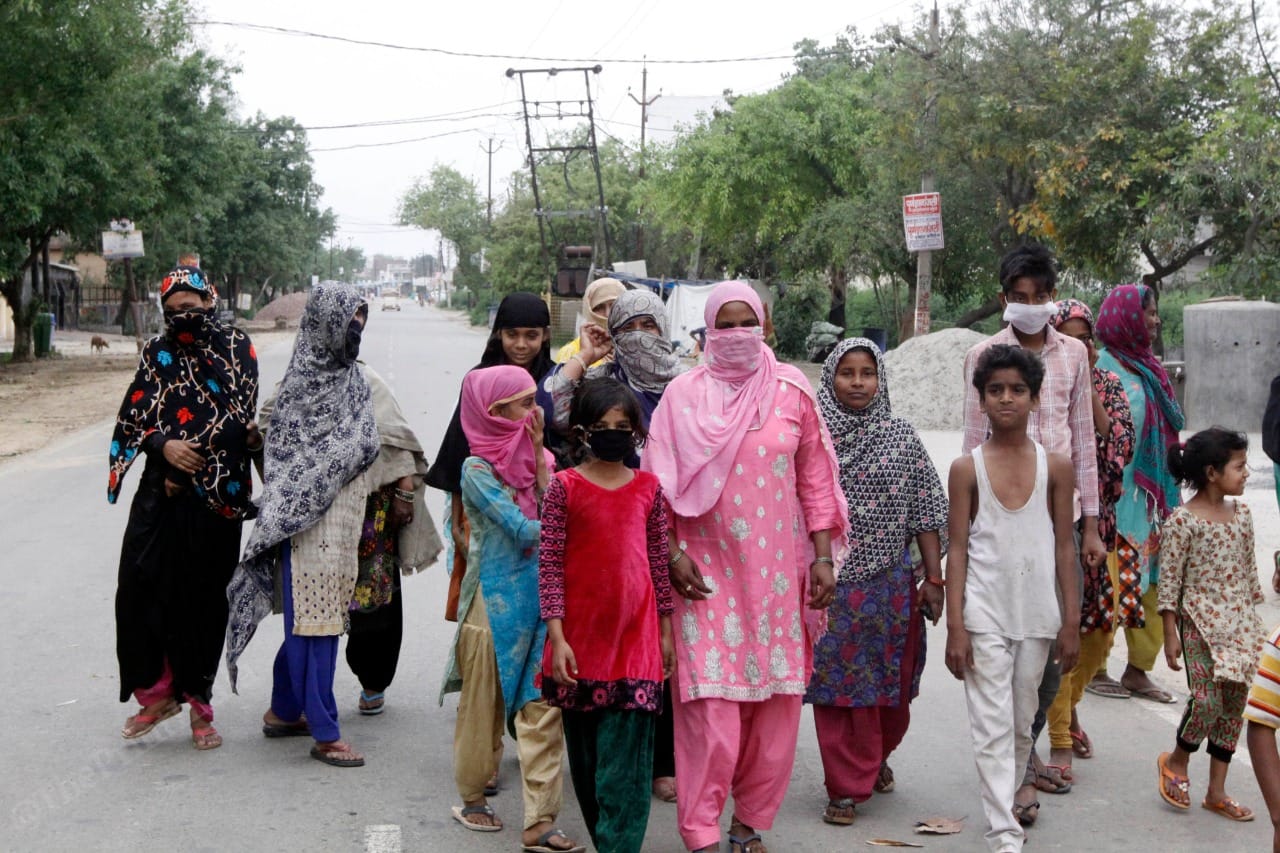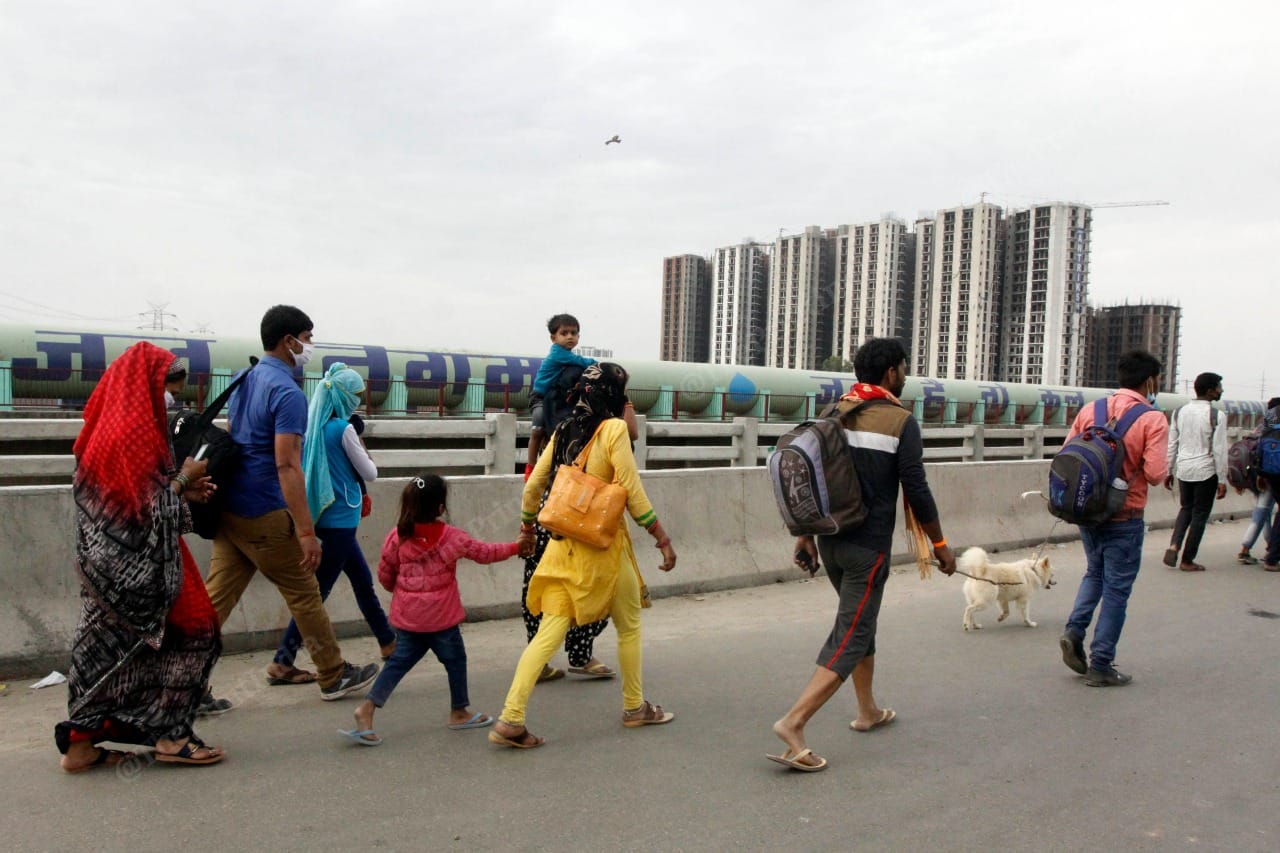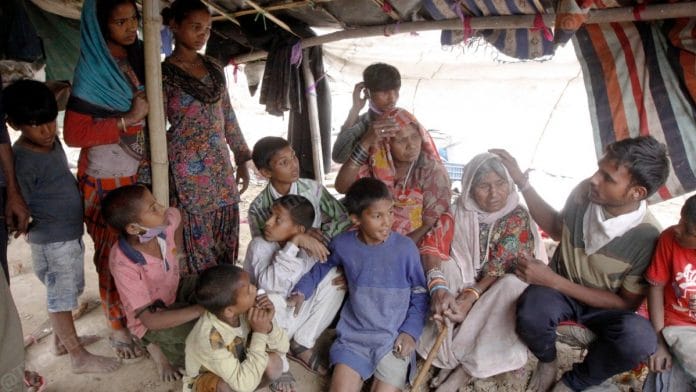Muradnagar, Ghaziabad: For over eight years, Vicky Kumar has been going around Ghaziabad’s Muradnagar town collecting garbage from hundreds of homes. But when he went about his job Wednesday morning, he was admonished by security guards of multiple gated colonies, and threatened to be reported to the police.
“They said people like me are the reason coronavirus is spreading in the country,” the 28-year-old told ThePrint. Kumar lives in Indrapuri colony, a jhuggi-jhopri (slum) cluster in Muradnagar.
“We don’t have TVs here. We are illiterate, how were we supposed to know there will suddenly be a lockdown?” Kumar asked. His family has been eating chapati with salt ever since the lockdown robbed them of their daily earnings.
Also read: 3 critical steps Modi govt must take to protect people and economy during Covid-19 lockdown
What social distancing?
For the 150-odd families living in the small, cramped shanties (also called jhuggis), following the social distancing guidelines issued by the Narendra Modi government is hardly within the realm of possibility. The colony has anywhere between 10 and 15 people residing in one jhuggi — approximately 6X6 square feet in size.
“Hum apne parivar ko toh nahi phenk sakte na (We can’t throw our family out of the jhuggi),” 70-year-old Bachana Devi said. Devi lives in a jhuggi with her son, daughter and seven grandchildren.
A couple hundred metres from the Indrapuri colony, at least 30 women from a neighbouring jhuggi cluster huddled in front of a two-storey house in Muradnagar Thursday afternoon.
A baby boy was born in the house recently, and the parents were celebrating by distributing packets of wheat. “We heard they are giving wheat, so we came rushing… We really need food right now,” said Shabana Khatoon, who was part of the crowd.

Until a week ago, despite the coronavirus threat, things were still normal for these women, all daily wage earners. But since the lockdown, getting through the day “without dying of hunger” has become the order of business.
“Sarkar keh rahi hai door door raho, corona se bachne ke liye. Jab ghar mein khaane peene ko nahi hai, toh corona se pehle kahi book pyaas se hi na mar jaye (The government tells us to keep distance from each other to avoid being infected with coronavirus. But when there’s no food or water at home, we might die of hunger and thirst first),” said Khatoon, a flower seller.
Also read: BJP to set up roti banks, give 5 crore meals per day to the needy during Covid-19 lockdown
‘We’ll believe it when we see it’
Finance Minister Nirmala Sitharaman announced a series of measures to aid the poor and daily wage earners. This includes a relief package worth Rs 1.7 lakh crore under the Pradhan Mantri Gareeb Kalyan Ann Yojana (PMGKY).
The relief measures include 5 kg rice or wheat for free for 80 crore poor — about two-third of population — for the next three months. This will be in addition to the 5 kg of staple they are already are eligible for.
The Uttar Pradesh government also announced relief schemes for the poor last week, becoming the first state to do so. This included an allowance of Rs 1,000 per month to daily wage earners as well as free ration until the pandemic ends.
However, many potential beneficiaries are unconvinced.
“There have been a lot of announcements, but until we get the money, we can hardly believe that any of this is for real,” Shanti Devi, a labourer in Muradnagar told ThePrint.
For many like her, who live in the interiors of UP, the concern isn’t just surviving the lockdown, it is also figuring out how to share the limited resources with those returning to the villages from cities.
Also read: Modi govt’s Gareeb Kalyan: Does India have the ability to deliver amid Covid-19 lockdown?
Long journey to survive
Day Two of the lockdown continued to see migrant workers in the national capital undertake the arduous journey to their villages of UP. With the inter-state buses off the roads and passenger trains halted till the end of the month, means of transit have been limited to just two rudimentary options — walk or cycle.
“I have been walking since 8 in the morning, it will take me at least two more days of walking to get to my village in Hardoi,” Vikas Sharma, who used to work as a tailor in Delhi’s Seelampur, told ThePrint.

Sharma was among the hundreds of labourers who were seen walking on the Delhi-Meerut expressway Thursday evening. Many of them were headed to Hardoi and Etawah. Located around 300-400 km from Delhi, these villages would have been a 5-7 hours of bus journey under normal circumstances.
For these labourers, their villages might not promise employment, but are nevertheless the last ray of hope in an otherwise despairing situation.
“It’s easier to survive in a village. People help you out if they know you are struggling. If nothing else, you can help out in farms and earn a decent living. No such possibility exists in cities,” said Bantu Ram, another labourer who spoke to ThePrint while walking home.
For him and the hundred others like him, the long journey isn’t just the walk to the village but dealing with a future of uncertainty as the coronavirus continues to spread and countries across the globe struggle to cope.
Also read: This is the team advising PM Modi in India’s battle against coronavirus






